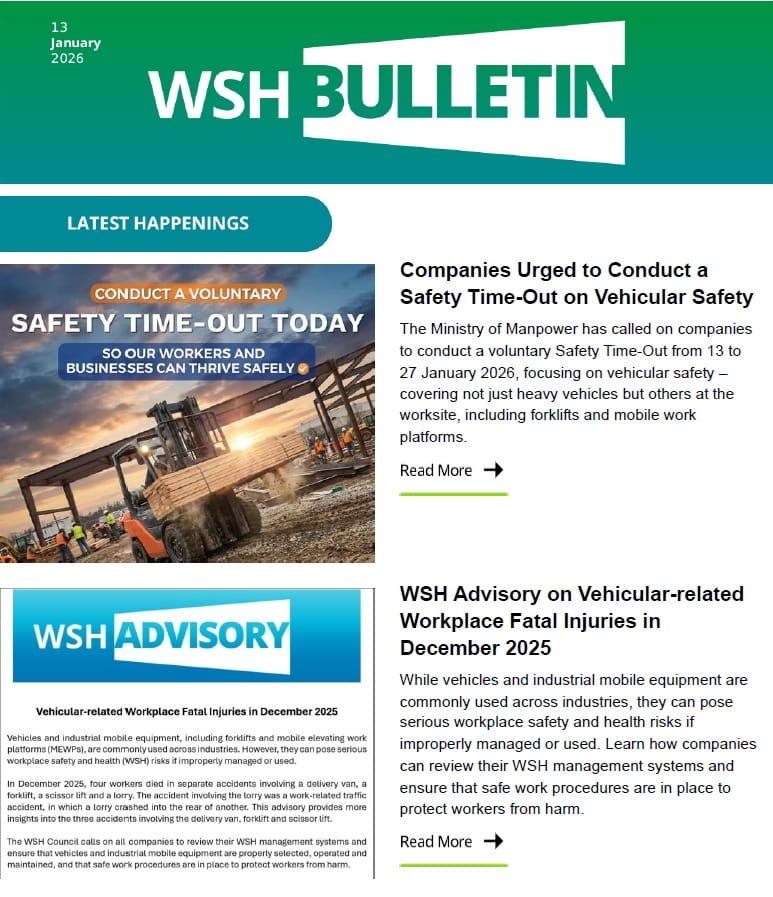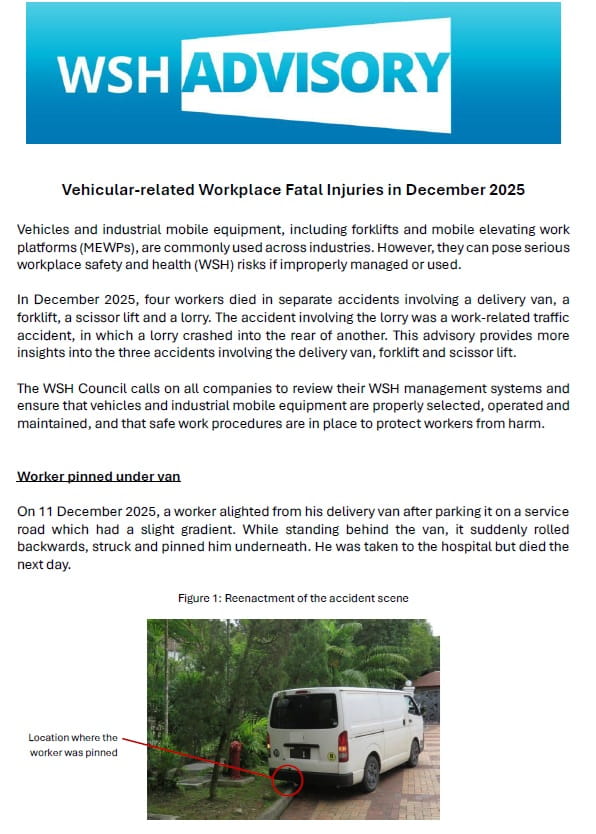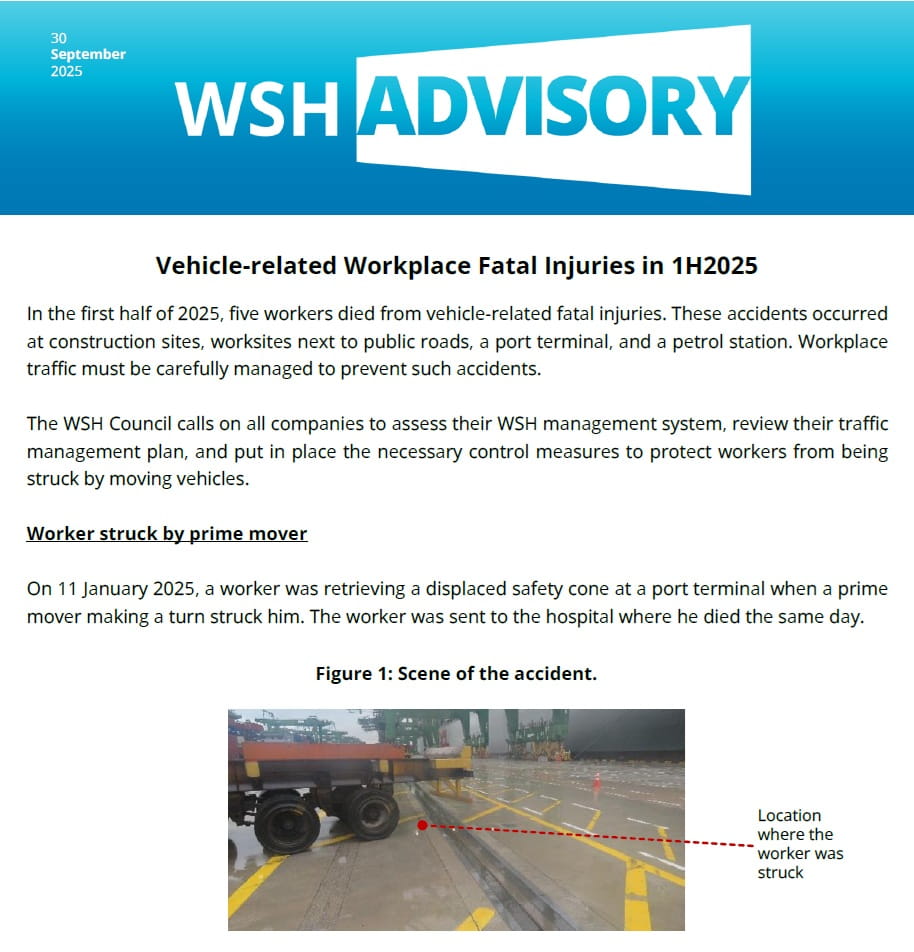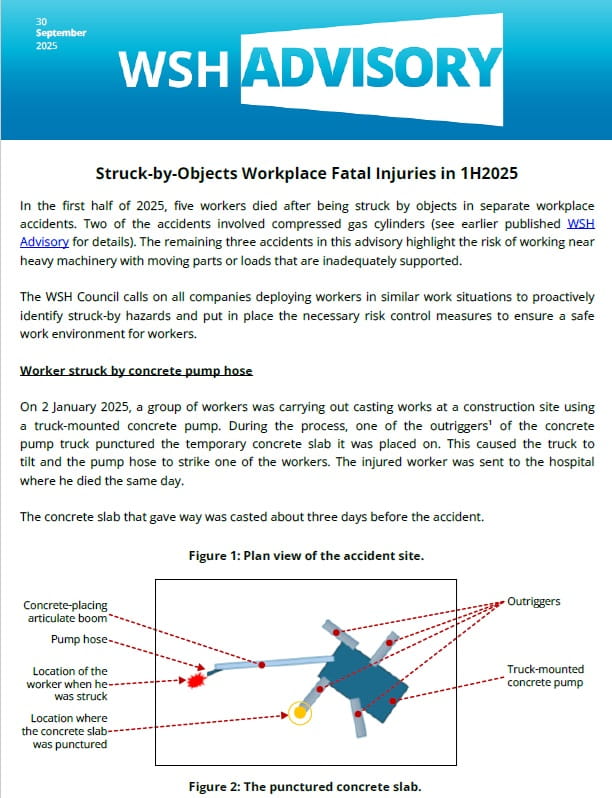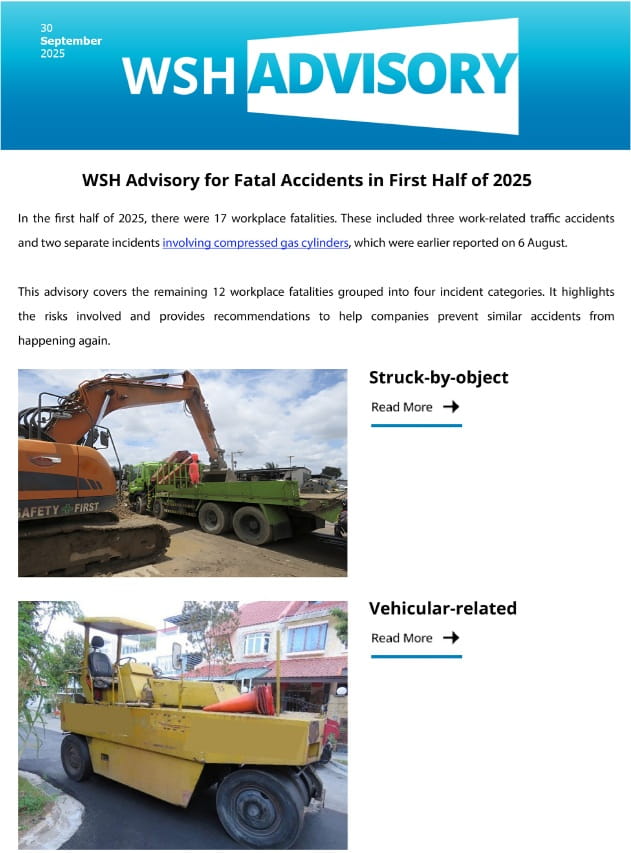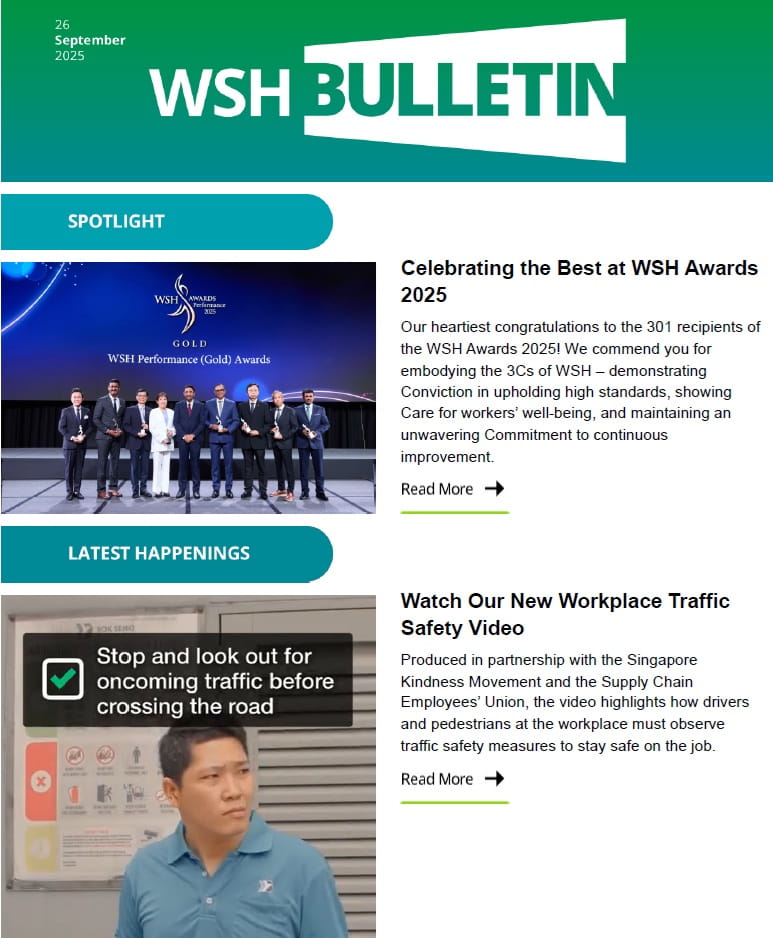Workplace Traffic Safety Management
Understand the importance of workplace traffic management. And learn how you can manage traffic at the workplace to minimise risks and hazards.
About Workplace Traffic Management
Workplace traffic management is a key part of operations for many industry sectors, which include construction, marine and logistics.
Poor management of workplace traffic can result in vehicle collision, or injuries to employees or visitors, and downtime to business.
It is therefore crucial for companies to have proper and effective onsite traffic management.
Workplace Traffic Safety Management Plan
An effective workplace traffic safety management plan is necessary to ensure the smooth traffic and safe operation of vehicles at the workplace.
As an employer, you must conduct proper risk assessments to identify all potential hazards and risks.
The plan should take the following into consideration:
- Transport activities taking place on site;
- Workplace traffic conditions;
- Types of vehicles operating in the premises;
- Traffic rules and regulations;
- Environmental conditions such as road and weather;
- Vehicle safety devices and available technologies;
- Work schedules;
- Drivers' behaviours and habits;
- Training and competency of drivers; and
- Health and fitness status of drivers.
Employer's Role
You should:
- Develop a workplace traffic safety management plan.
- Ensure the plan is implemented and communicated to all employees.
- Ensure that employees follow the traffic safety rules and safe work procedures.
- Ensure there is proper demarcation of pedestrian walkways from vehicular roads.
- Ensure employees are trained and competent to perform their roles.
- Familiarise employees with emergency response plans and procedures.
- Keep records of workplace traffic incidents and take timely interventions.
- Establish a vehicle maintenance regime.
Employee's Role
You should:
- Obey workplace traffic rules and observe traffic warning signs.
- Attend necessary training courses to be competent for the job.
- Drive only vehicles that you are licensed to operate.
- Operate vehicles with care and use them only for their intended purposes.
- Refrain from tampering with vehicle's safety devices.
- Wear all PPE provided properly.
- Report any damage to vehicle, safety device or PPE to your supervisor.
- Report all road accidents and near-miss incidents to your supervisor.
For More Information
- WSH Guidelines on Workplace Traffic Safety Management (PDF)
- Notebook for Vocational Driver (Are You a Safe Driver?) (PDF)

